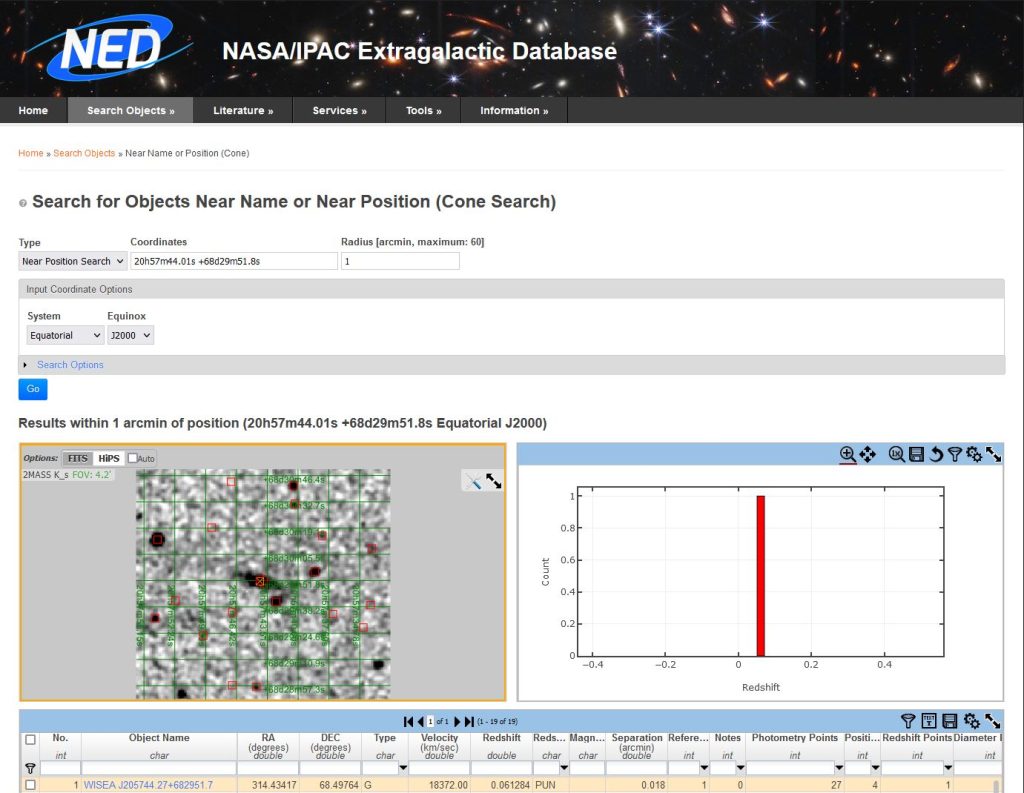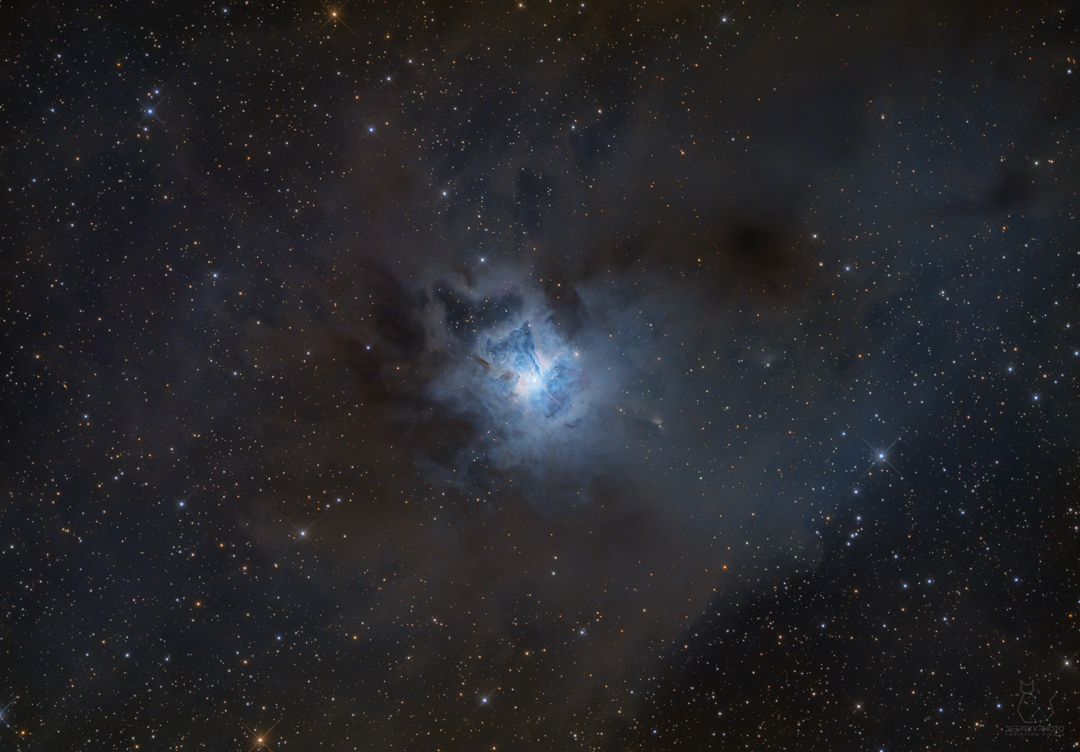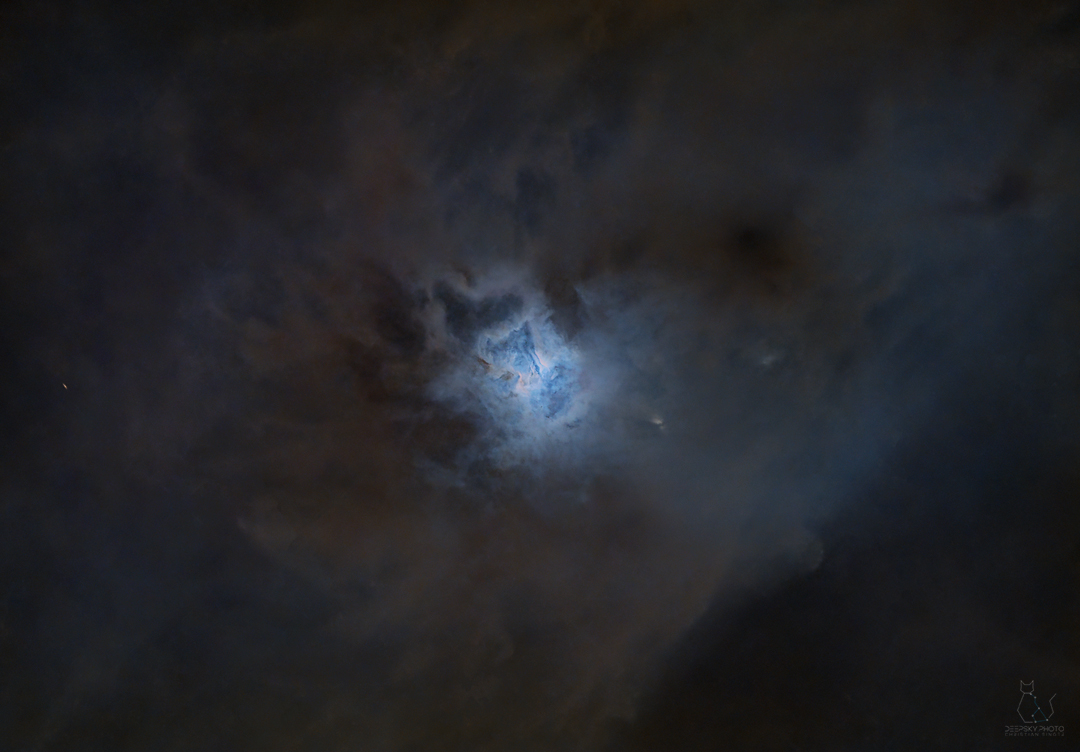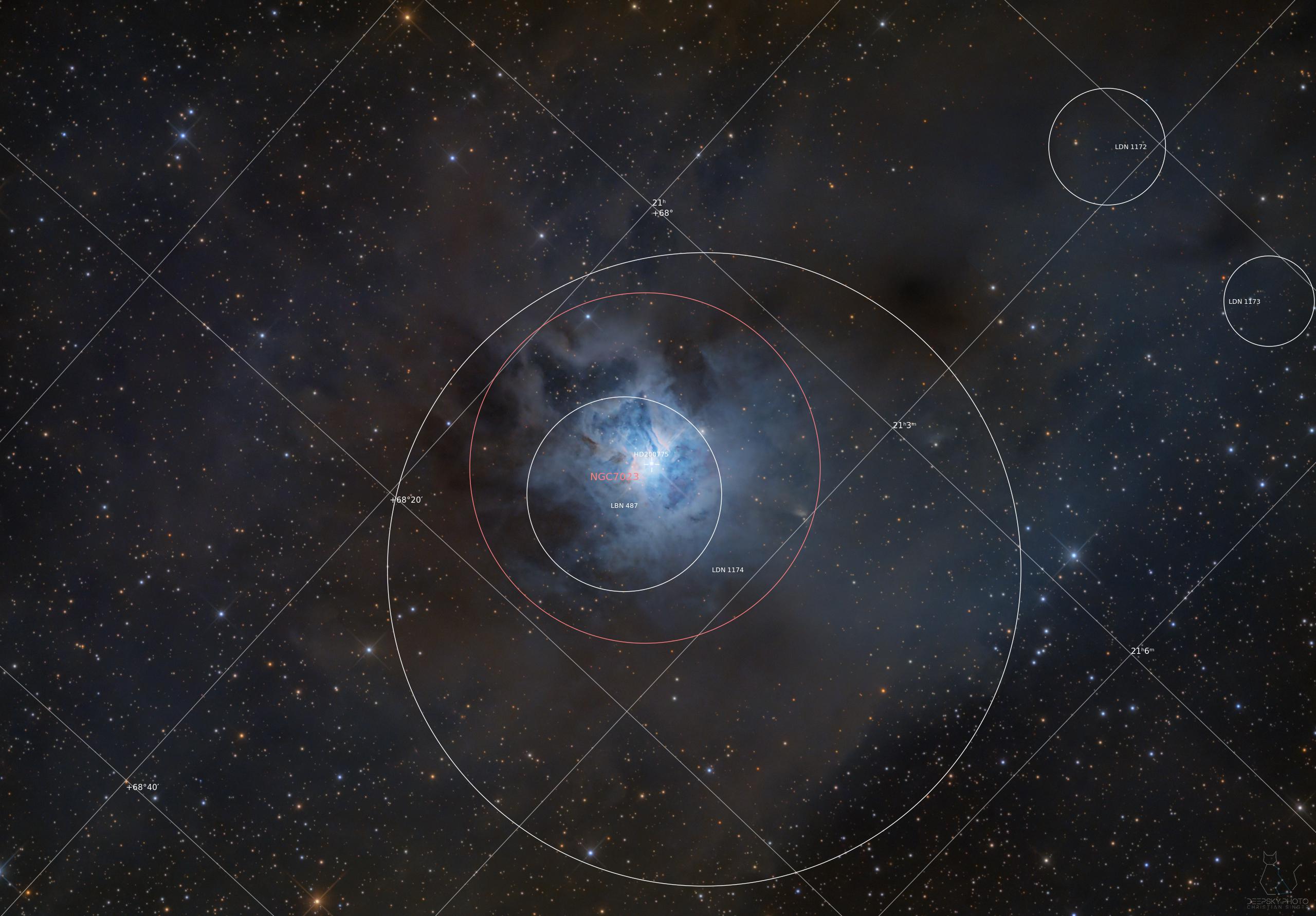Reflection Nebula in constellation “Cepheus”
![]() Published in “Sterne und Weltraum”, issue 10/2023.
Published in “Sterne und Weltraum”, issue 10/2023.
Project #4
NGC7023 – Object Description
The Iris Nebula (also known as NGC 7023 and Caldwell 4) is a bright reflection nebula in the constellation Cepheus. The designation NGC 7023 refers to the open cluster within the larger reflection nebula designated LBN 487. The nebula, which shines at magnitude +6.8, is illuminated by a magnitude +7.4 star designated SAO 19158. It is located near the Mira-type variable star T Cephei, and near the bright magnitude +3.23 variable star Beta Cephei (Alfirk). It lies 1.300 light-years away and is six light-years across. (Source: Wikipedia)
NGC7023 – Project Publications
Image Publications
Please find all project-related publications for this revision below.
Image and Signal Comparisons
Standard vs. starless version;
NGC7023 – Project Findings
[Image 2] shows a starless version where you can see a faint galaxy on the left side of the image. I tried to identify it with Aladin, but unfortunately I couldn’t find any information. If you’re interested the coordinates are 20:57:44.01 +68:29:51.8.
I asked for help on cloudynights where user RazvanUnderStars (thanks, buddy!) pointed me in the right direction to use NED (“NASA/IPAC Extragalactic Database“). It’s possible to search for coordinates there;

The faint galaxy has been catalogued by the name of WISEA J205744.27+682951.7. The exact coordinates are 20h57m44.20s, +68d29m51.5s, so I was pretty accurate in Aladin earlier. Here are some (selected) details (based on NED);
- it travels with a speed of 18.372,48 km/s
- the Hubble distance has been calculated with 268.70 +/- 18.81Mpc (1 Parsec [pc] = 3,26 light-years [ly], so 1Mpc equals 3.260.000ly. That means that WISEA J205744.27+682951.7 is roughly 876,4 million light-years or 8,29e+21 kilometers away from Earth).
- it is classified as object type “G”, which simply is a confirmation that it’s actually a Galaxy
- it’s diameter has been calculated with 73,56kpc (our milky way has 26,8kpc in diameter, so J205744.27+682951.7 is actually 2,75x bigger than it)
- the apparent magnitude has been calculated with 12,526 mag
A small note on the Hubble distance mentioned above;
- you’d need to travel 2,07e+17 times Earths’ equator
- our Sun is 150 million kilometres away, so the faint galaxy is 5.53e+13 times farther away than our Sun
- I won’t convert that in bathtubs 🙂
Pretty awesome what you can capture with amateur equipment if you ask me!
NGC7023 – Project Details
Please find all project-related details for this revision below.
I would like to thank my friend Daniel Nimmervoll for the great workshop where the final revision above was created.
| Astrobin Link | NGC7023 / Iris Nebula with OSC |
| Further Publications | spektrum.de – NGC 7023 / Irisnebel |
| Astronomical Object | NGC2239 / LBN487 / Caldwell 4 / Cr 429 |
| Distance to Earth | 1.300 light years |
| Size / Diameter | 6 light years |
| Date(s) of Photography | December 2022 January 2023 February 2023 |
| Exposure Details | Clearglass: 201 x 180″ (10h 3min) Clearglass: 64 x 300″ (5h 20min) Total: 15h 23min |
| Calibration | FlatsA "flat frame" is shot against a bright surface and contains vignetting and all the "bad" things (e.g. dust particles) that block/disturb your light train. The combination/stack of multiple flat frames is called a "Master Flat". More: 50 BIAS: 50 Master-Dark |
| Equipment | Mount: Skywatcher EQ6-R PRO (the old w/o USB-interface) Telescope: Skywatcher 200PDS Newton (200mm/1000mm, f/5) Camera: Touptek DeepSky Pro 2600c (Gain: 100, Offset: 100) Clearglass Filter: Baader Clearglass 2″ Dual Narrowband Filter: Optolong L-eXtreme 2″ Corrector: Pál Gyulai GPU Komakorrektor Guiding(Auto-)Guiding is essential in astrophotography, as an un-guided mount/telescope will produce blurry images as the stars / the deepsky object will drift away. This is heavily dependent on the exposure time, so for long exposures you want to make sure to have a perfectly set up auto-guiding. More: ZWO ASI120MM + 50mm Helical GuideScope |
| Software | Observatory Automation: Sequence Generator Pro Guiding(Auto-)Guiding is essential in astrophotography, as an un-guided mount/telescope will produce blurry images as the stars / the deepsky object will drift away. This is heavily dependent on the exposure time, so for long exposures you want to make sure to have a perfectly set up auto-guiding. More: PHD Post-Processing: Astro Pixel Processor + PixInsight + Photoshop |




